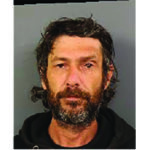Home »

ICBC: one quarter of B.C. drivers admit to nodding off
In a new Ipsos survey, one-in-four (24%) B.C. drivers admitted to momentarily nodding off while driving in the past year. Half of all drivers (52%) surveyed also shared that they’ve driven while tired or drowsy in the past year.
As more busy summer weekends lay ahead, ICBC is warning drivers to watch out for an often-overlooked summer danger: fatigue. Long drives and hot weather can be a dangerous combination leading to fatigue and serious, preventable crashes.

Police data shows that 71% more people are injured or killed in fatigue related crashes in July and August in B.C. compared to the rest of the year.
ICBC is asking drivers to make sure they get enough sleep before a long drive, take breaks, and avoid driving if you’re feeling tired or drowsy.
“It’s alarming that so many drivers on our roads have been tired enough that they’ve nodded off or fallen asleep,” said Kathleen Nadalin, ICBC road safety manager. “Consider how you feel before getting behind the wheel. If you’re tired to begin with, you shouldn’t be driving. If you’re feeling rested, keep in mind that hot summer weather can be draining, especially on long drives, so plan to take a break every two hours to keep your energy levels up and switch drivers if you can.”
Among drivers who reported driving while fatigued in the past year, 68% cited lack of sleep the night before as a factor, while 53% of respondents pointed to driving too long without a break, and 48% attributed it to the time of day they travelled.
Among those who cited lack of sleep as a factor, 38% had slept four hours or less the night before, and 46% had slept five to seven hours. Among those who cited long drives as a factor, 46% had been driving three hours or more without a break.
“Fatigue slows your reaction time and when driving at highway speeds, even a slight reduction can significantly increase your risk of crashing,” said Nadalin. “If you notice any signs of fatigue like not remembering the last few minutes of driving, struggling to stay focused or blurred vision, the safest choice is to pull over when safe and take a nap.”
In the Southern Interior, 154 people are injured or killed in crashes involving driver fatigue every year.
To help prevent driver fatigue-related crashes, we’ve invested approximately $2.7 million in new shoulder and centreline rumble strips on B.C. highways since 2016 in partnership with the Ministry of Transportation and Transit.
Rumble strips alert drowsy or distracted drivers if their vehicle drifts from their lane. We also invest in median and roadside barriers to prevent vehicles from veering off the road or into oncoming traffic, especially on high-speed highways and rural roads.
This summer, our road safety team has also been visiting BC Ferries’ terminals around long weekends to connect with travellers and keep road safety top of mind.
Warning signs of driver fatigue
Drivers shared they most commonly rely on fresh air/airflow, music and caffeinated beverages to stay alert behind the wheel. But if you notice any of these signs of fatigue, the best choice is to pull over when it’s safe and take a nap or switch drivers.
- You’re finding it difficult to stay within your lane.
- Your driving speed creeps up or down.
- You don’t recall the previous few minutes of driving.
- You’re struggling to stay focused on the road or experiencing blurred vision.
- You’re feeling bored, yawning or daydreaming.
- Your eyes feel heavy or you have difficulty keeping your head up (if this happens, stop driving.)
Tips to prevent driver fatigue
Get a good night’s sleep – ideally at least seven hours of good quality sleep.
Consider how you’re feeling and how much sleep you’ve had before you start driving. Avoid driving when you’re feeling tired.
Avoid driving at times when you’re normally sleeping.
Understand the effects that any medication you’re taking could have on your driving.
Take a break at least every two hours and switch drivers if possible.
Visit drivebc.ca to plan a rest break every two hours along your route so you know where you can safely pull over
ICBC photo
ICBC







